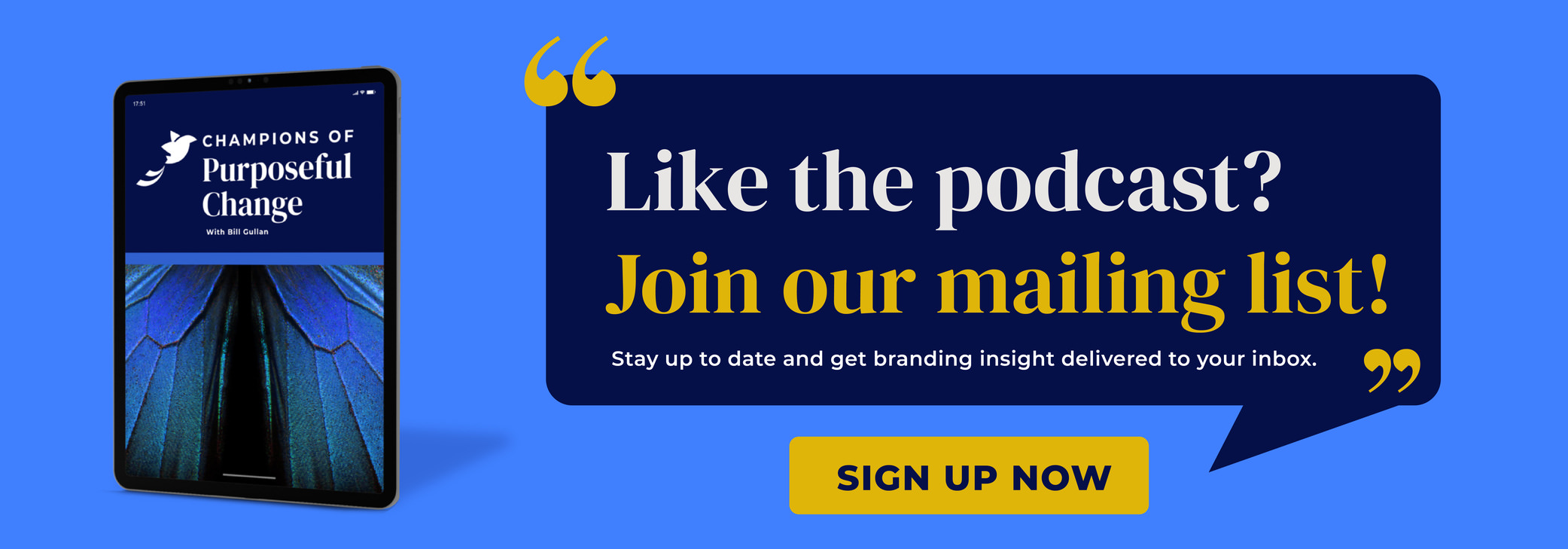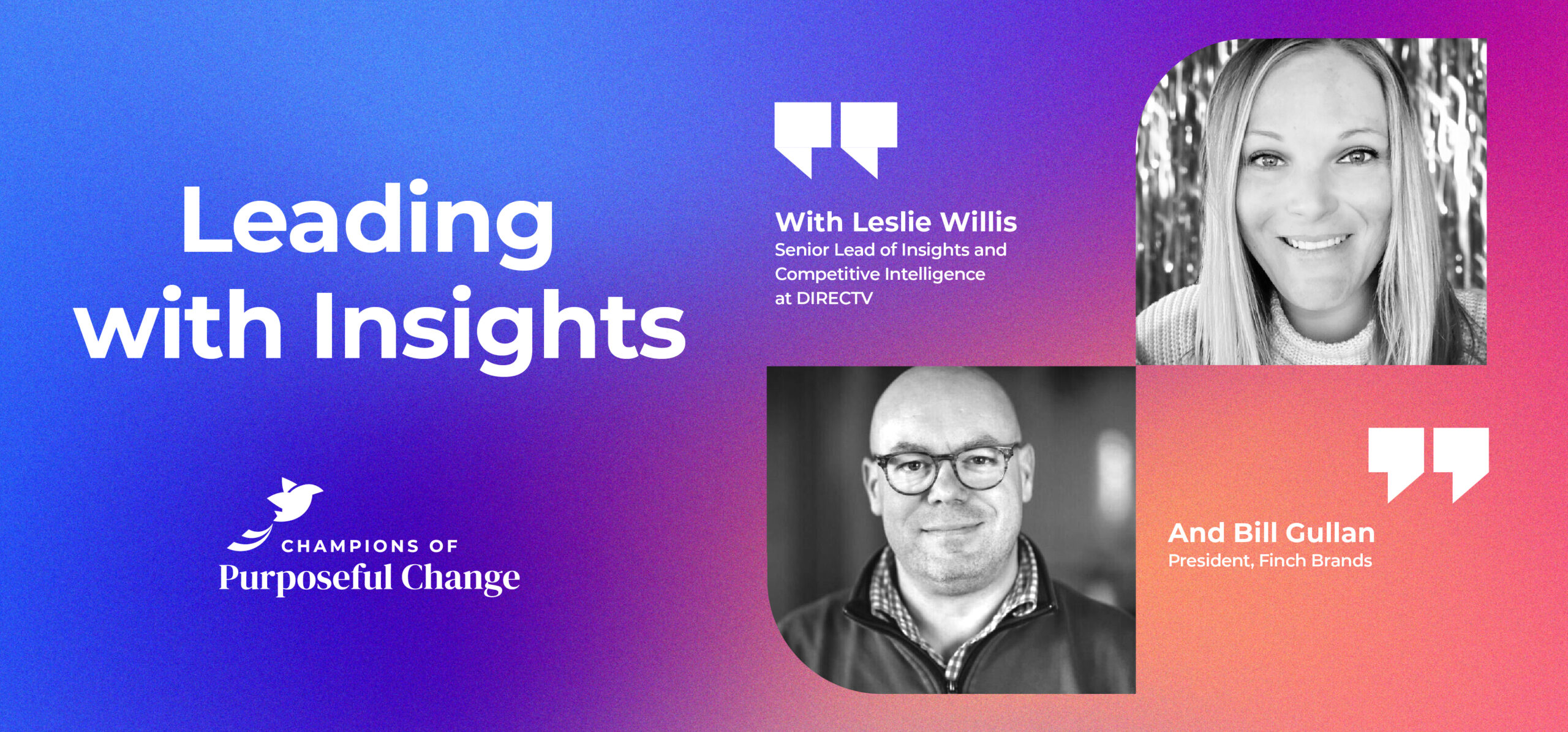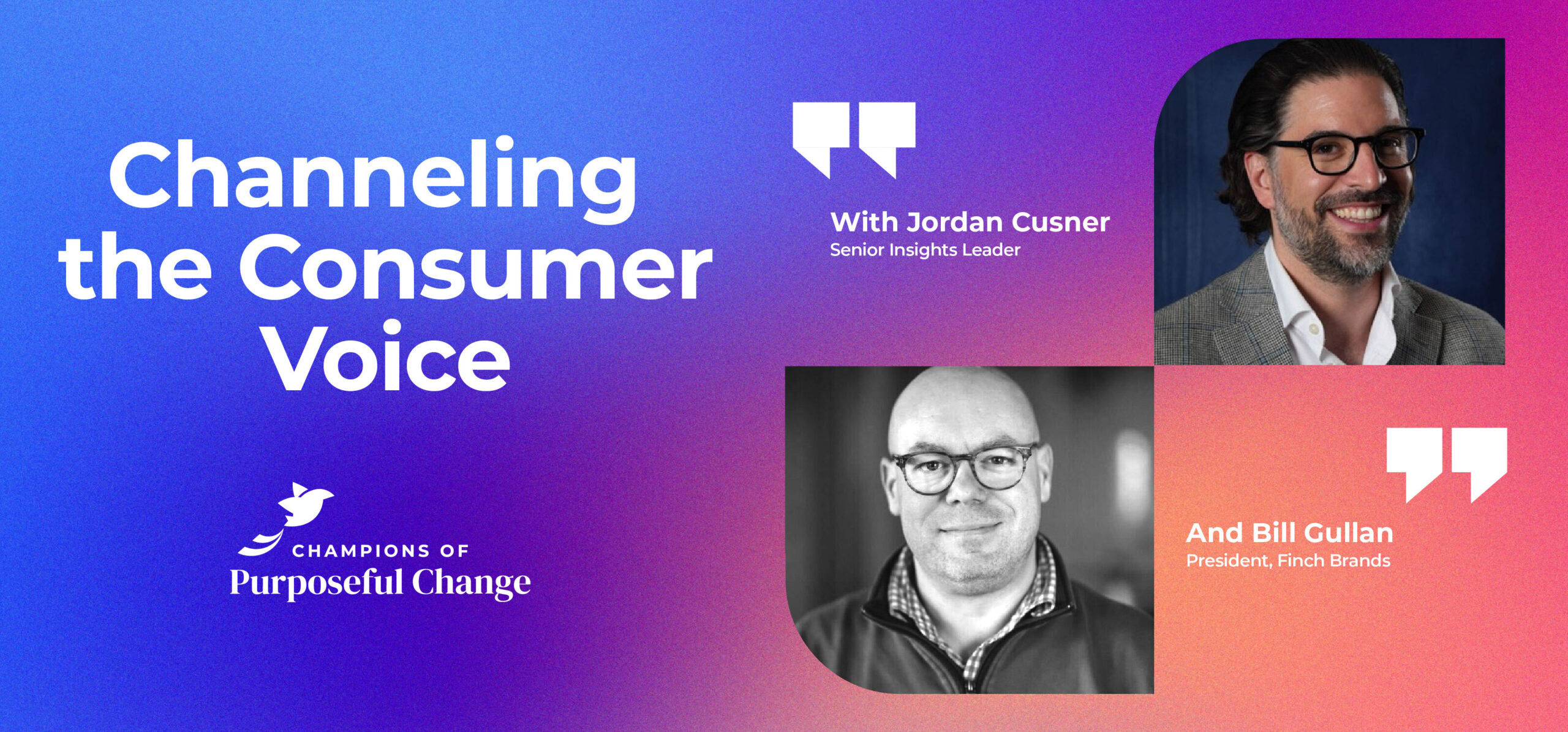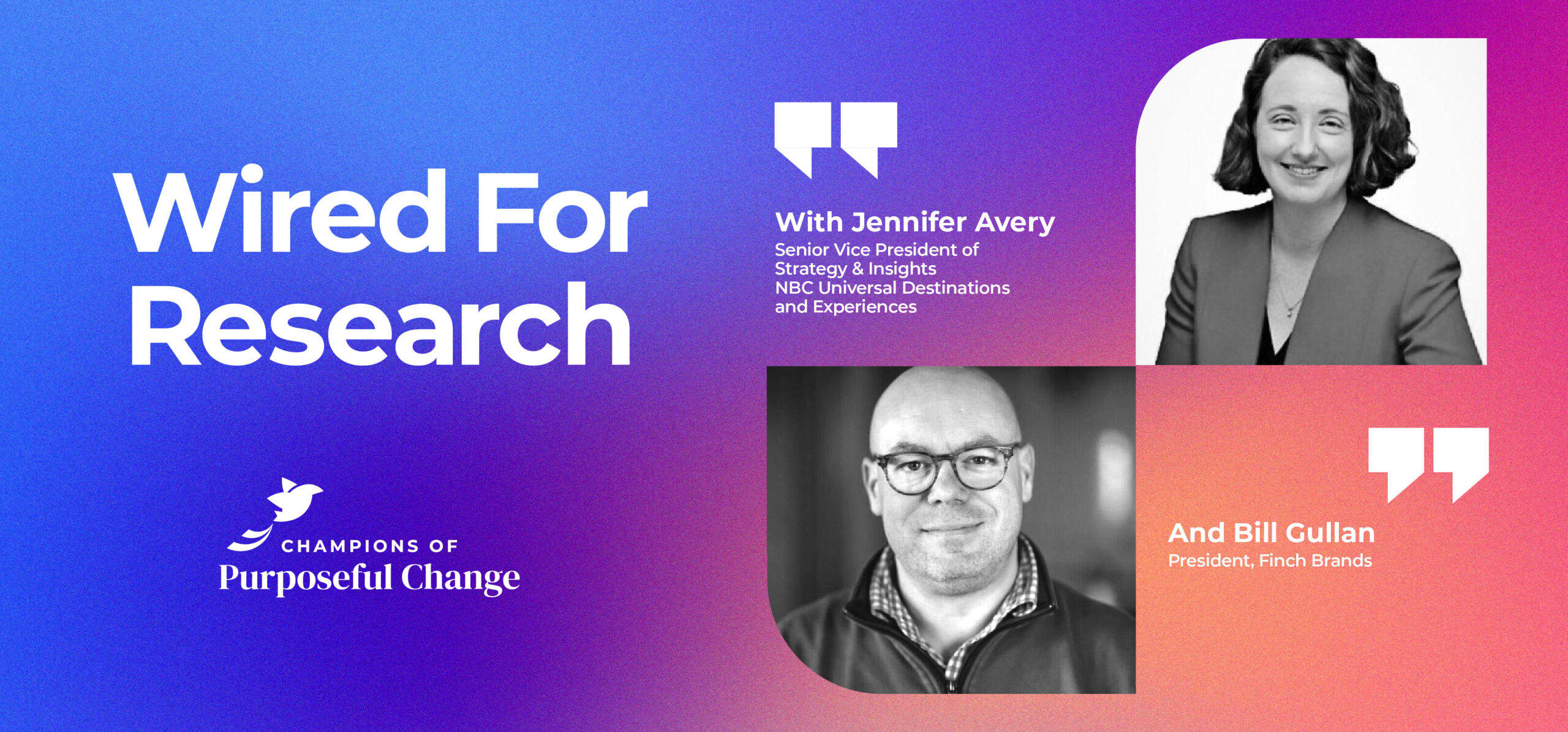Branding Strategy Meaning: One Big Idea
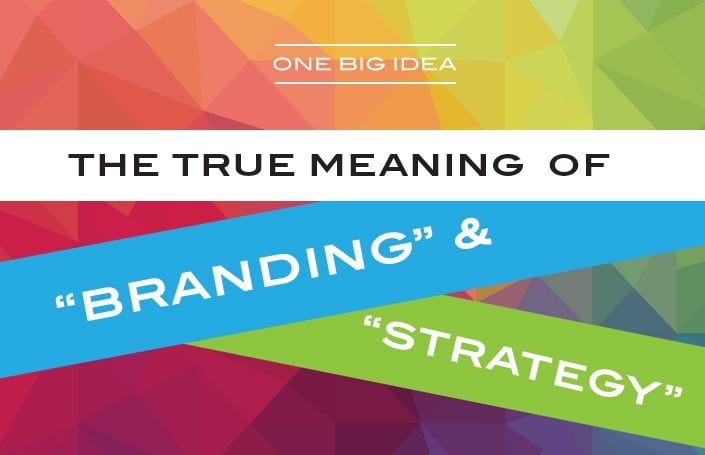
Branding Strategy Meaning: One Big Idea
‘One Big Idea’ is a shorter episode of Real-World Branding, to be released in the week between our interviews. In this edition, host Bill Gullan seeks to set the world straight on what the meaning of ‘branding’ and ‘strategy’ really is! A brand is a set of expectations, memories, stories, and relationships that when taken together account for a consumer’s decision to choose one product or service over another. If you enjoy our podcast, please subscribe and leave us a review!
Podcast: Download Subscribe: iTunes | RSSTranscription
Bill Gullan: Welcome one and all, this is Real-World Branding. I’m Bill Gullan, President of Finch Brands a premier boutique branding agency. Thank you for joining us, we’re going to do something a little bit different today. We’ve received feedback since we went to market with this podcast that our listeners would appreciate, and do appreciate, the current format of biweekly interviews with business and brand builders who have interesting stories and things to say about their companies, their categories, their careers and everything else. We’ve been really gratified by the reception that we’ve been getting and I think what we’ve heard listeners asking for is if we could find ways to deal with some of the fundamental elements or implications from some of the things we’ve heard in these interviews, or core concepts related to the art and science of what we do at Finch, and others of us who are practitioners in the world of brand development and management do.
So in the spirit of taking feedback and letting one’s audience shape the direction, what we decided to do is, in off weeks between the interviews that we conduct, to do a much shorter edition of Real-World Branding that is really focused on One Big Idea that is related to the world of branding in business building. These are often inspired by the interviews that we conduct and so we’re going to try that today and actually you get two for the price of one.
So the One Big Idea today is two words that have been used in so many ways by so many different people as to become completely unrecognizable. Those words are the word brand, or branding, and strategy. I’m going to speak for a minute or a two about each of them and hopefully redefine them, as well as issue a call to action for all of you out there who are using these words, to use them and to reassert the original definition so that they restore some level of meaning in terms of what they were intended to do.
The word brand, I’ll define it the way Seth Godin has defined it, a brand is a set of expectations, memories, stories, and relationships that when taken together account for a consumer’s decision to choose one product or service over another. Brand is a concept that is far larger and far more nuanced in many ways than the way that it is commonly used. Many people say branding to mean a name, a logo, packaging, or an advertising campaign. Those are the components of branding and of building and growing brands, but they do not come close to defining what branding truly is and the power of well-constructed brands.
This isn’t a surprise that the ‘brand’ concept means what it does. When we think about where it came from, the first commercial manifestation of branding comes from back when the world was largely consisting of agrarian economies and a branding iron was used initially to draw distinctions between one’s cattle and the cattle of the guy or gal, probably mostly guy at that time, whose farm, fence, or field was right next door. Branding was purely and literally about differentiation my cow, your cow. As these brands went on hides and then that hide and that which lay within ultimately made it to market in town, the brands carried through and thus consumers of meat were able to make decisions based upon these symbols that they saw.
They might find that one brand or one family or farm’s yield was fresher or chewier, or more substantial, or whatever the basis on which they were making decisions of which to buy. The brand, it’s real way back roots in just purely differentiating one’s livestock from someone else’s came to mean something commercially. So over time, branding has become a discipline for which folks are paid a heck of a lot of money and in which executives place the great deal of trust.
The word branding, again it’s been used in a variety of different contexts, at its heart branding or a brand and then the practice of branding is about two things. It’s about promise and it’s about differentiation. It’s about promise from a perspective of expressing what one should expect from you. What your promise is to them of the experience that they will have when interacting with your company or your products or your services, so that’s promise. The other one is differentiation and again back to the classical definition mine versus yours. Branding in the art of branding is designed to create decision points and to convince the people who are in positions to make those decisions, why us versus someone else.
Ultimately a brand is about all of the content related to the image, personality, or attributes of a product and service. Then the art of branding is to affect the way the market perceives and acts on those attributes and images. So branding is not, as noted, marketing. Marketing is a tool to express brand differences, to create loyalty, and to create preference to create trial. A name, a logo, a symbol, a color scheme, packaging, all the touchpoints in the experience, are tools of skillful brand developers and managers, but taken individually, are not branding.
Developing a logo is a way to represent an image of a brand and a way to try to tilt the decisions in your direction, to give people something to hold on to, something that’s pleasant and motivating. But being great at developing logos or recognizing greatness in logos is not in itself brand expertise.
So that’s branding, the other topic and the other word or concept that I want to redefine, underline, italicize, and bold is strategy. We find that the word strategy, used very commonly today to mean ‘I thought about it before I did it.’ Strategy is a discipline; it is a process. It is not just simply about thinking and nor is it about drawing a distinction between something that was purposeful and something that was thoughtless.
Strategy is about setting major goals and initiatives that are taken by an organization, and using rigorous assessments of factors related to these strategies – for example the availability of financial and human resources of a company, the external factors that may be shaping the opportunity for that company in a particular product category or space, or with the way that consumers or customers are thinking these days.
The act of strategic development and teaching management is a very rigorous, disciplined process of assessment. There are tools used in that, for example many are familiar with the concept of a SWOT analysis – strengths, weaknesses, opportunities, and threats – which is a very simple graphic, but the process of doing a good one is a very in-depth process and there are many other structures, thought elements, and planning elements that go into strategy and strategic planning (a phrase for that discipline).
To give you an example of what strategy means in practice, and the difference between strategy and tactics, let’s think for a minute about a company, let’s make up a company that is selling sportswear to women. When the company goes through its strategic planning process, someone is thinking that there’s some velocity and opportunity around women’s athletics and women’s activewear. The process of assessing a strategy for this fictional company to enter or extend themselves into the category of women’s activewear involves a bunch of different parallel analysis.
One may and should think about what the resources required to be a credible contender in that category are, what would they be, and are they within reach for that company – we will call it Company X. Company X would also need to think about what the competitive set looks like in the category that they’re thinking about entering. Company X will also need to look at to what degree their internal and human expertise, and that of their partners, would enable them to be really good, plausible, powerful, and strong in that category that they might choose to enter.
Company X would need to look at the entire cost structure of how they manufacture and from where they source the materials to think through whether or not the supply chain would enable them to be successful in that category. They’ll need to look at what it would take to market and be successful there, what it would take to advertise. What are the unique trends that impact the consumer who shops in that category and whether those trends are intensifying, abating, or remaining static?
You look at women’s activewear, for example, one of the trends that has been driving the success of that category, in addition to the work of all the manufacturers and brands that are within it, is the fact that there’s been an explosion in women’s sports participation both formally as well as informally – gym membership, yoga, the emergence of other activities that women in America are highly interested in. The leaps and bounds growth of the number of people participating has given a lot of strength to companies that may want to enter that category and Company X really ought to evaluate, as part of a strategic planning process, whether or not those trends will continue.
So Company X may decide, ultimately having studied that deeply through their strategic planning process, that a strategy for them, a major goal or opportunity that they plan to organize their company to seize as a way of activating their full potential and accelerating profitable growth, they may decide that their launch of a women’s activewear line is an important business strategy for them.
Strategies must not just be about thinking, strategy is about the formulation and validation of major goals and objectives, and then the commitment to them. The operations element of a strategy is to bend organizational processes and partnerships in decision-making toward the achievement of those strategic objectives.
Tactics are fundamentally how do you do it? How should you advertise? What, once you decide to enter this category, are the strategies to enter women’s activewear? There are hundreds, in many cases, of tactics that Company X would need to employ to lead to the greatest potential from execution to expectation, and beyond of that strategy. It would be your product strategy, what category you should enter, what should your pricing be like, how does that affect the supply chain, certainty in the marketing realm, certainty in the distribution realm and on and on and on.
So at this point, having heard a lot of folks use the word, ‘hey we do strategy’ and meaning primarily that they’re reasonably smart and their process involves sitting back a little bit before they just start to do and do and do. That is not strategy. I’d say that’s probably strategy with a lower case s whereas strategy with a capital S is really about something much greater.
So there you have it One Big Idea for this week is the definition and the reaffirmation of the traditional definition of both brand and branding as a concept and strategy and strategic planning as a concept. We will be back with you next week with another interview with a really interesting business and brand builder.
Couple things you can do to help us out if you like what we’re doing at Real-World Branding. Please consider subscribing, so that this podcast just somehow magically appears in your app, through the store of your choice. Please also consider, if we’ve earned it, giving us a rating, hopefully five stars, we’ve learned helps others find us. We’d love to see comments in your app of choice reflecting how you think we’re doing and we would love to continue this open dialogue we’ve had with our listeners. Probably the best way to do that is through Twitter @billgullan or @FinchBrands, finch like the bird. That dialogue, we would love for it to continue to include not only feedback on what you’ve heard but guest ideas, people you’d love to hear in this format, as well as questions you’d love for us to ask future guests.
So hope to continue this dialogue we’ve been really grateful for the support of our listeners and their kind words as well as their really helpful actionable feedback and we look forward to continuing this for many weeks. Signing off from the Cradle of Liberty, have a terrific day.
Get in touch with us today to learn about all our brand consulting services!
